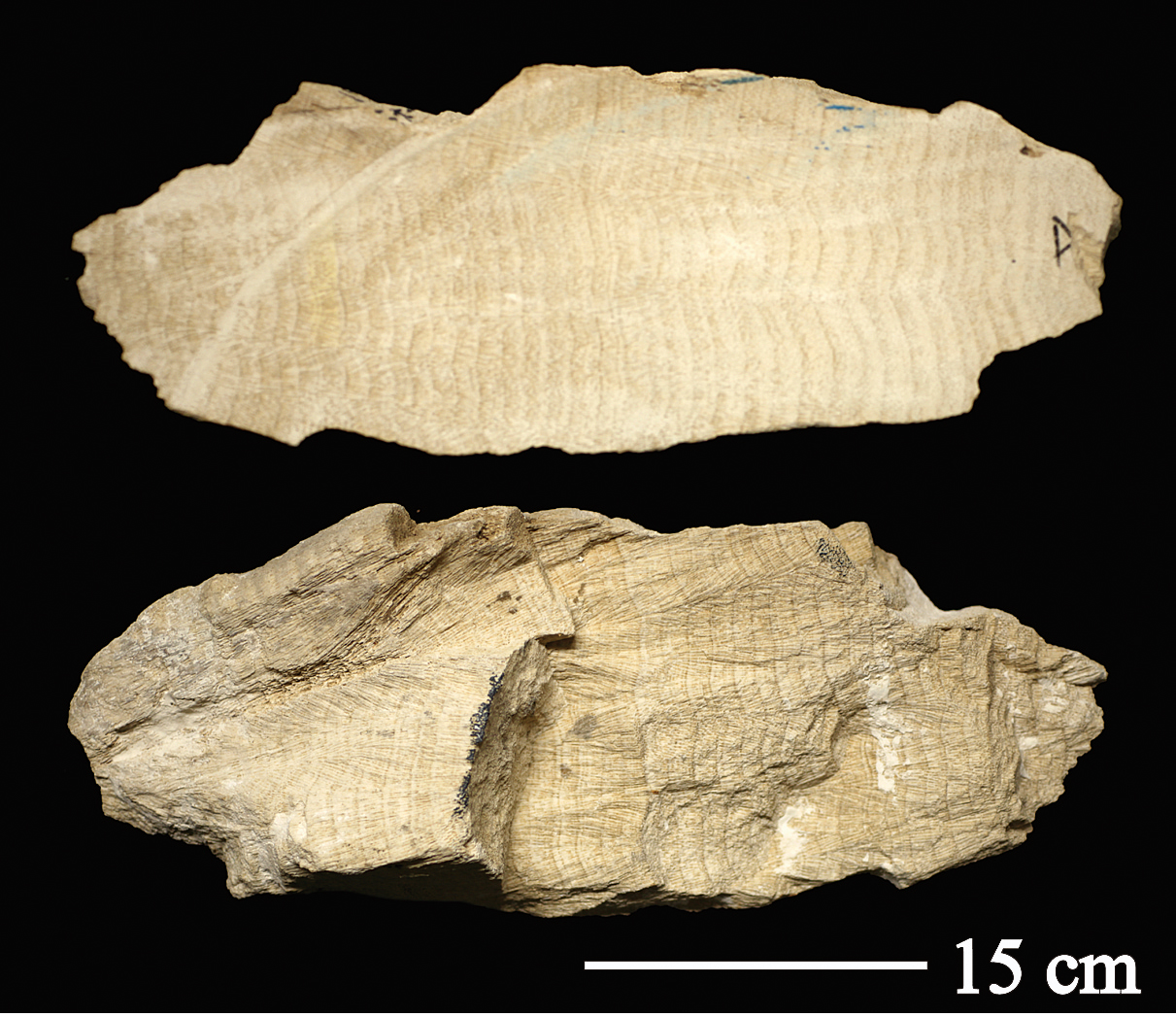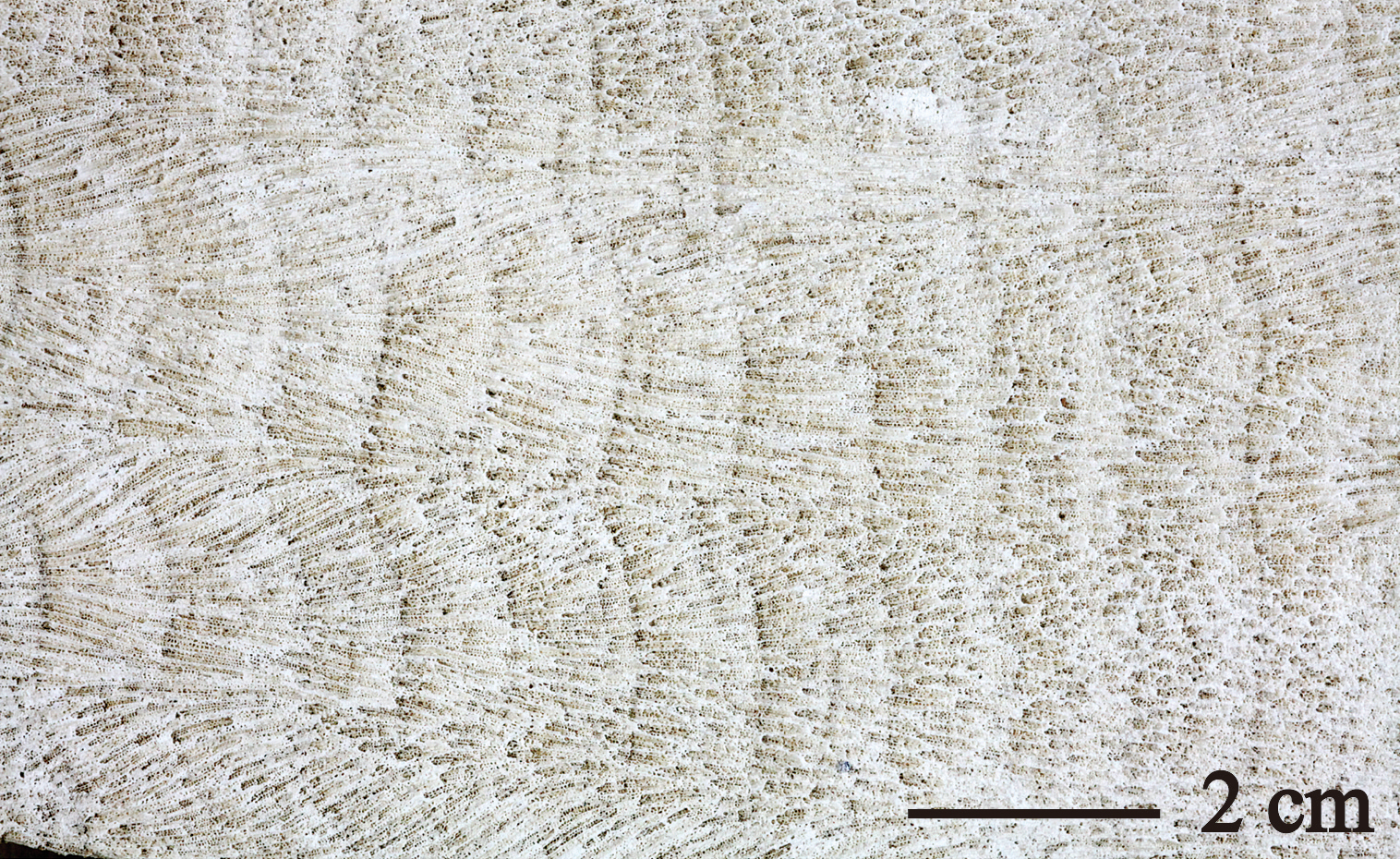B9
Porites
long-lived coral used for paleoenvironmental reconstruction
Porite is one of the major groups of reef-bulging corals whose massive colonies attain more than 3 m. With advantage of its long life, this group of coral has been used for paleoenvironmental studies. In calcium carbonate coral skeleton, annual growth rings are visible in a section like those of wood. Fluctuation in sea surface temperature can be reconstructed by a combination of measuring growth rings, isotope profiles, and radioactive dating. The Kikai Island is made up of coral reefs, and it is estimated that the island have uplifted in about 200 m in altitude in the past 120,000 years. Fossil corals in the island have greatly contributed to advances in long-term paleoenvironmental studies. (Takenori Sasaki & Hajime Kayane)
References
Morimoto, M. et al. (2004) Seasonal radiocarbon variation of surface seawater recorded in a coral from Kikai Island, subtropical northwestern Pacific. Radiocarbon 46: 643-648.
Morimoto, M. et al. (2007) Intensified mid-Holocene Asian monsoon recorded in corals from Kikai Island, subtropical northwestern Pacific. Quaternary Research 67: 204–214.


